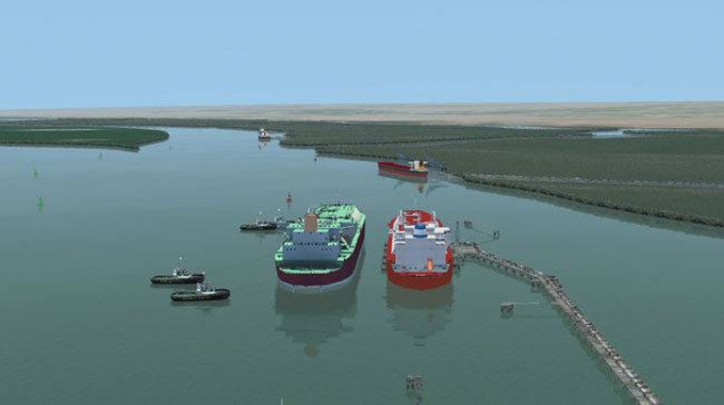During the IX Congress of Argentinean Engineers Association, held in Buenos Aires, the maritime and port consultancy company Siport21 has presented a compilation of nautical studies for 40 Liquefied Natural Gas terminals, 20 of them using FSRU technology.
Due to the higher safety standards required in this kind of Terminals and the maritime traffic of gas tankers, the company has developed a methodology in order to combine the maximum safety in the nautical operations and the optimization in the design. Also, it includes all parties involved in their development and operation.

This methodology includes the definition of horizontal and vertical dimensions of navigable areas, the definition of UKC (Under Keel Clearance), manoeuvring studies (strategy, operational limits, towing, emergencies), dredging works optimization, aids to navigation requirements, moored ship dynamic analysis, passing-ships interaction, nautical risk assessment and training of Pilots, Captains and Tug Masters.
In these studies, other aspects have been taken into account, such as the optimal location of the terminals, interference with current traffic, the necessity of a FSRU, long channels navigation (up to 50 km.), shallow water areas, design vessel larger than usual traffic, future meteorological conditions (intense currents, tsunami risk, monsoon areas, etc.).
Siport21 has participated in 40 LNG Terminals projects. Some of them are especially remarkable, like the first LNG Import Terminal in Pakistan (with tide dependent operations), LNG Terminals in areas exposed to tsunamis or Q-Flex and Q-Max access to different terminals, such as Bahia Blanca and Escobar (Argentina), Map Ta Phut (Thailand), Sines (Portugal) or Bilbao, Barcelona and Huelva (Spain).
Source: Siport21